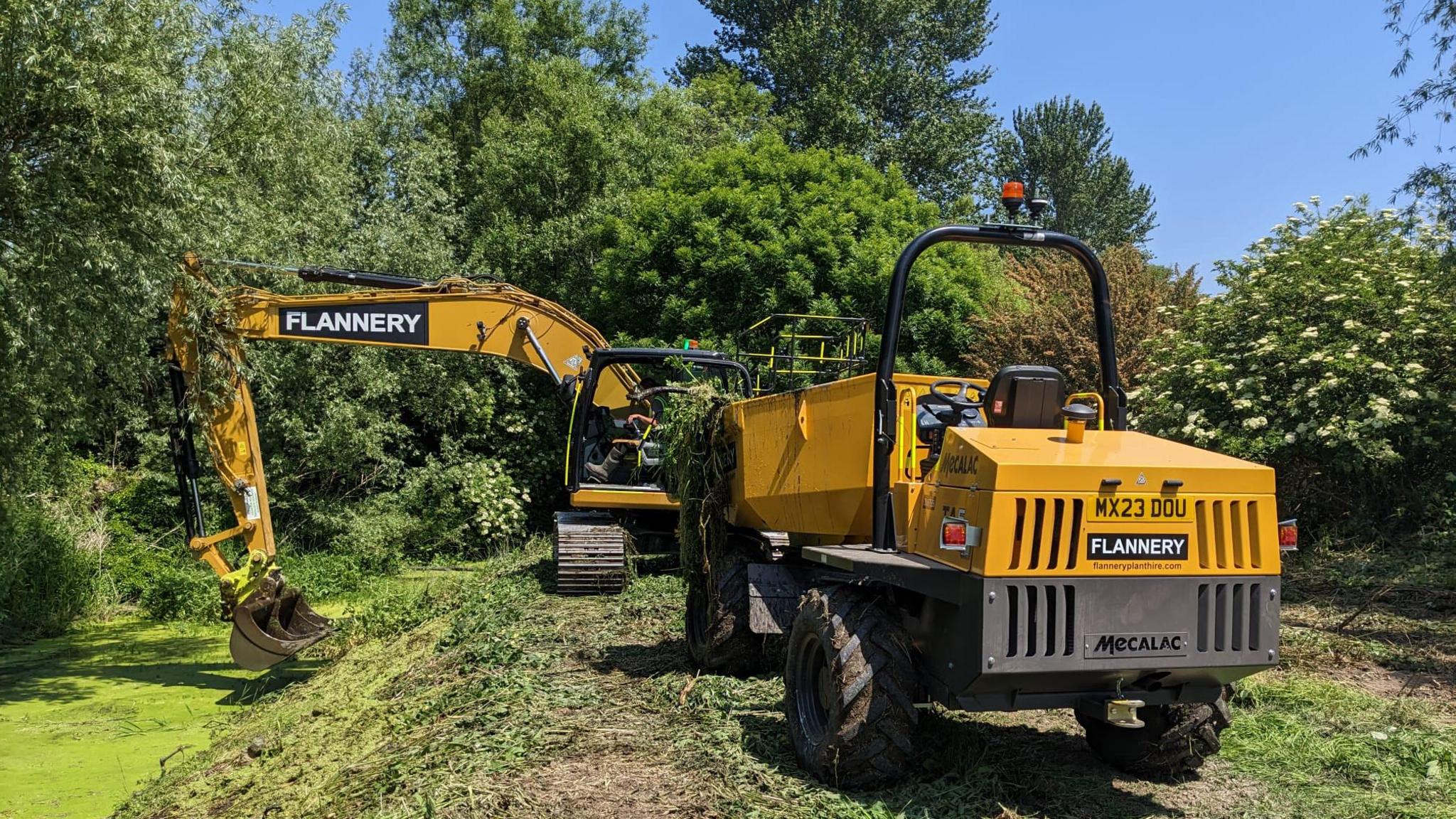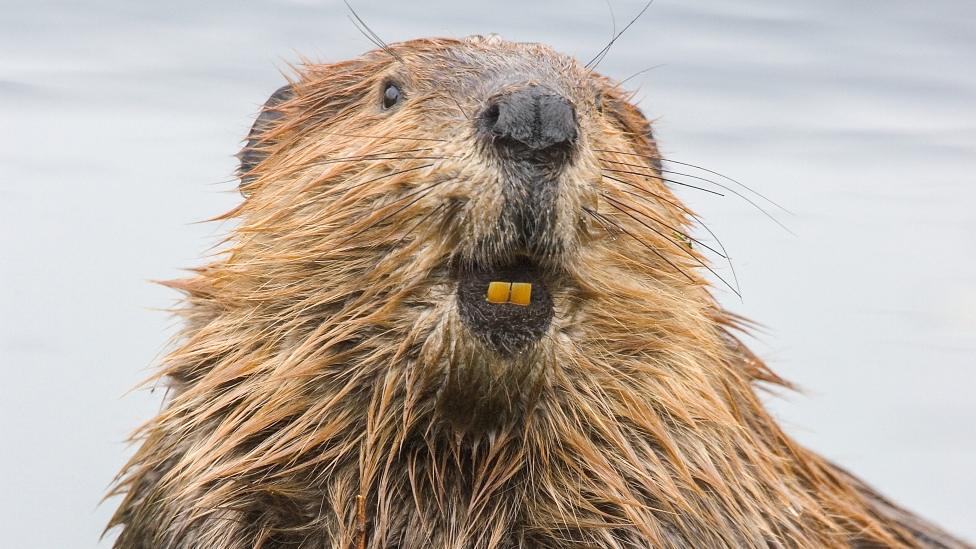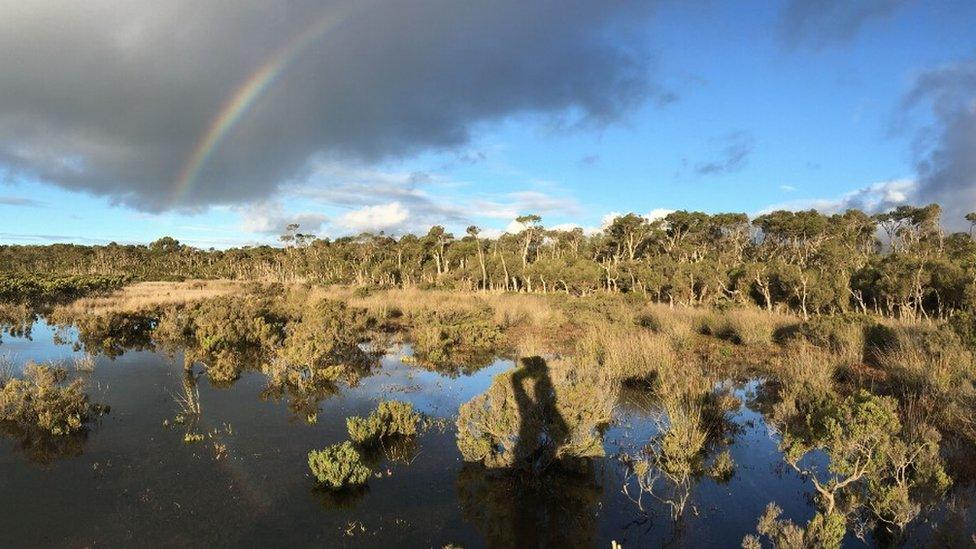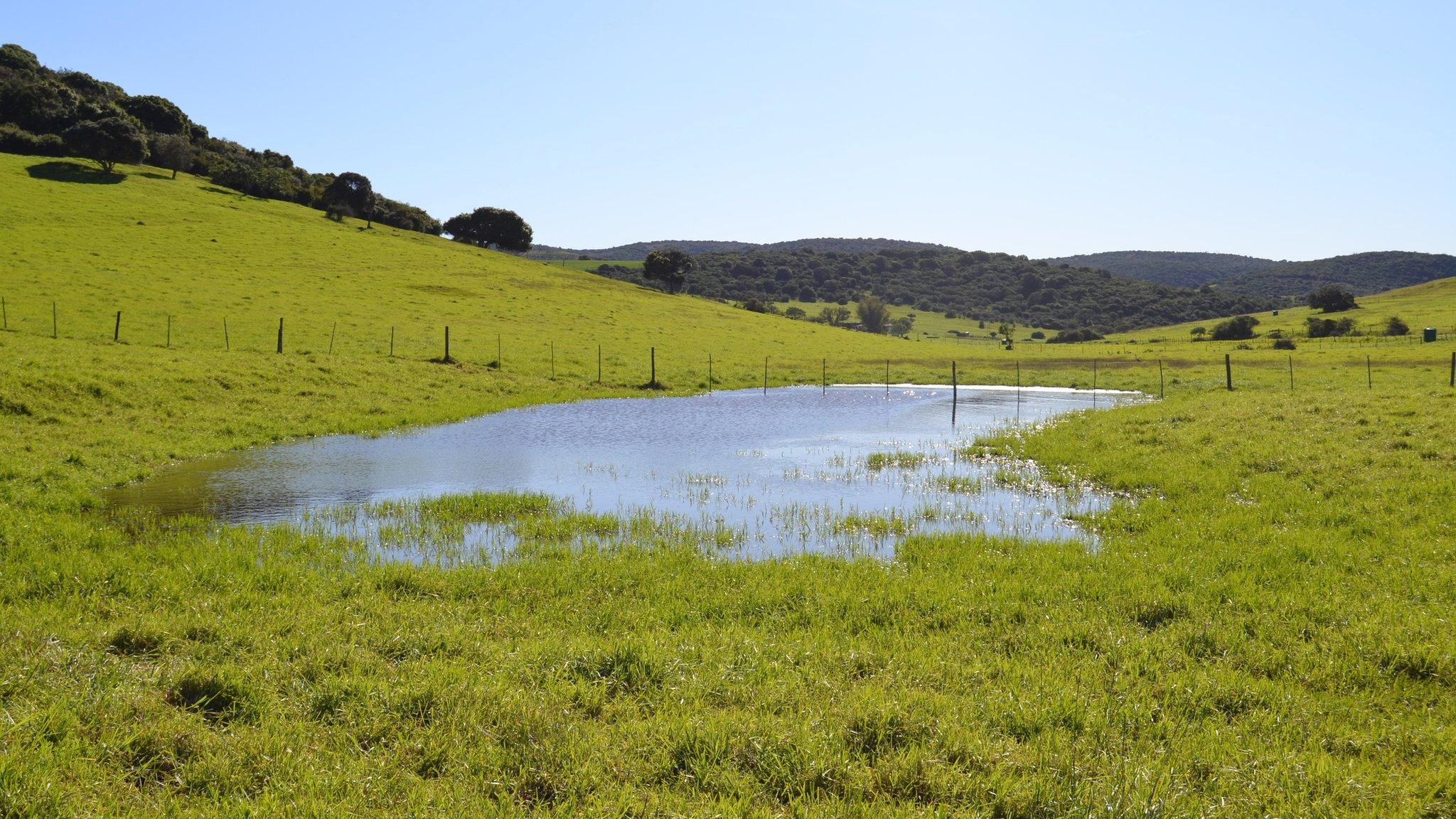Wetland habitat to be created by stream clearance

Invasive parrot's feather weed is being cleared from the Cockshut stream near Lewes
At a glance
The Cockshut Stream near Lewes is clogged with invasive parrot's feather weed
Clearing the weed will allow the stream to flow into a new wetland habitat
There are hopes the habitat will attract new species, including the rare ramshorn snail
- Published
A new wetland habitat is being created by work which involves clearing an invasive species of weed from a stream in East Sussex.
The Cockshut Stream, a 3km (1.9m) chalk waterway, runs alongside the Lewes Brooks on the South Downs to the River Ouse.
The stream is currently clogged with parrot's feather, an aquatic South American weed which shades out native species and causes water to become stagnant.
Realignment work will allow the weed to be removed and for the Cockshut to flow into a new 6.8 hectare wetland.
Brought to the UK as an ornamental plant for ponds, parrot's feather has spread into the wild, invading and destroying hundreds of waterways across the country.
Clearing the weed will also reduce the risk of flooding.
Emily O’Brien, Lewes District Council's cabinet member for climate, nature and food systems, said: “It’s fantastic to see work taking place on this project which will not only enhance biodiversity, help with flood management and carbon storage but also allow the stream to flow unimpeded, unpolluted and with its native plants and wildlife protected."
The project is being carried out by a partnership of the council, the Ouse and Adur Rivers Trust, Lewes Railway Land Wildlife Trust and South Downs National Park Authority.
Follow BBC South East on Facebook, external, on Twitter, external, and on Instagram, external. Send your story ideas to southeasttoday@bbc.co.uk, external.
Related topics
- Published29 October 2018

- Published5 February 2023

- Published6 March 2019

- Published25 November 2016

- Published17 September 2013